How to Germinate Seeds in Rockwool for Hydroponics: 9 Plants that Thrive
Table of Contents
The Benefits of Germinating Seeds in Rockwool for Hydroponics
Rockwool is a highly effective and popular growing medium for germinating seeds in hydroponics. Its unique properties make it well-suited for this purpose, providing several benefits for the growth and development of plants.
One of the main advantages of using rockwool for seed germination is its excellent water retention properties. The fibrous structure of rockwool allows it to hold and distribute water evenly, ensuring that the seeds receive optimal moisture levels. This promotes healthy root development and prevents the risk of overwatering, which can lead to root rot and other detrimental effects. Additionally, rock-wool’s water retention capabilities help to maintain consistent hydration for the seeds, even in high-temperature environments where water can quickly evaporate. This makes rockwool an ideal choice for growers in various climates, providing a reliable and stable environment for seed germination.
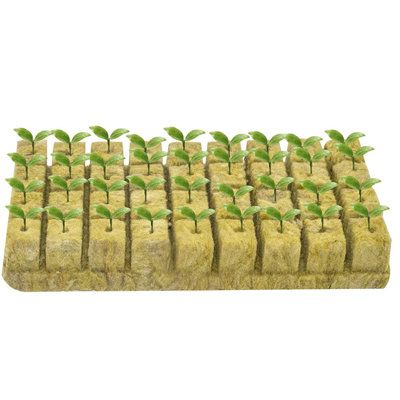
In addition to its water retention properties, Rockwool also offers excellent aeration capabilities. The porous structure of the material allows for the free-flowing movement of air and oxygen to the roots, promoting their overall health and vitality. Adequate oxygen levels are essential for seed germination, as they facilitate the respiration process required for energy production. By using rockwool, gardeners can ensure that their seeds have access to an ample supply of oxygen, allowing for robust and vigorous growth. Furthermore, the improved aeration provided by Rockwool also helps to prevent the development of root diseases and pathogens, ensuring a healthier growing environment for the young seedlings.
Apart from its water retention and aeration abilities, Rockwool is also a sterile and inert growing medium. It does not contain any nutrients or contaminants that could negatively impact seed germination or plant growth. This provides growers with greater control over the nutrient levels and pH balance of the growing environment, allowing for precise adjustments based on the specific needs of the seeds or plants being cultivated. The neutral pH of rockwool also helps to minimize the risk of nutrient imbalances or deficiencies, ensuring that the seeds receive the necessary elements for healthy growth.
Overall, the benefits of germinating seeds in rock wool for hydroponics are numerous. Its superior water retention, aeration capabilities, and sterile nature make it an excellent choice for ensuring successful seed germination and early plant development. With the use of rockwool, gardeners can create a favorable growing environment that promotes optimal root growth, nutrient absorption, and overall plant health.
• Rockwool’s water retention properties ensure optimal moisture levels for seed germination
• Prevents overwatering and root rot
• Maintains consistent hydration in high-temperature environments
• Excellent aeration capabilities promote healthy root development and prevent root diseases
• Allows free-flowing movement of air and oxygen to the roots
• Provides sample oxygen supply for robust growth
• Sterile and inert growing medium, no nutrients or contaminants that could negatively impact growth
• Greater control over nutrient levels and pH balance for precise adjustments based on specific needs
of seeds or plants being cultivated
• Neutral pH minimizes risk of nutrient imbalances or deficiencies
Understanding the Basics of Hydroponics and Rockwool as a Growing Medium
Hydroponics is a method of growing plants without the use of soil, relying instead on a nutrient-rich water solution to provide the necessary elements for plant growth. One essential component of hydroponics is the growing medium, which serves as a support structure for the plants’ roots. Rockwool is a popular choice among hydroponic enthusiasts due to its excellent water retention and aeration properties.
Rockwool, also known as mineral wool, is made by melting and spinning basalt rock or recycled slag into thin fibers. These fibers are then compressed to form blocks, cubes, or slabs, which serve as an ideal growing medium for hydroponic systems. The fibrous structure of rockwool provides ample oxygenation for the roots, ensuring they receive sufficient air to thrive.
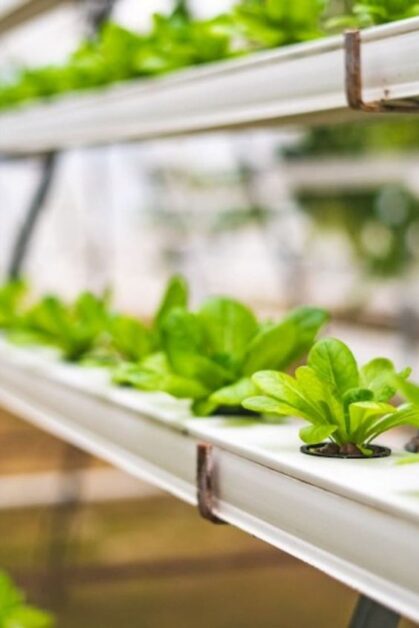
One of the main advantages of using rockwool as a growing medium in hydroponics is its ability to retain moisture. The fibrous structure holds onto water, preventing it from being quickly drained away. This ensures that the plants’ roots have consistent access to hydration, promoting healthy growth. Additionally, rockwool’s excellent water retention allows for less frequent watering, reducing the risk of overwatering and waterlogged roots.
• Rockwool is a popular choice for hydroponics due to its excellent water retention and aeration properties.
• It is made by melting and spinning basalt rock or recycled slag into thin fibers, which are then compressed to form blocks, cubes, or slabs.
• The fibrous structure of rockwool provides ample oxygenation for the roots, ensuring they receive sufficient air to thrive.
• One of the main advantages of using rockwool as a growing medium in hydroponics is its ability to retain moisture.
• The fibrous structure holds onto water, preventing it from being quickly drained away and ensuring consistent access to hydration for plant roots.
• Rockwool’s excellent water retention also allows for less frequent watering, reducing the risk of overwatering and waterlogged roots.
Choosing the Right Seeds for Rockwool Germination
Choosing the right seeds for rockwool germination is a crucial step in ensuring successful hydroponic growth. With a wide variety of plant species available, selecting the most suitable seeds for your specific goals and conditions is essential for achieving optimal results.
When choosing seeds for rockwool germination, it is important to consider factors such as plant type, growth characteristics, and environmental requirements. Different plants have varying needs in terms of light, temperature, humidity, and nutrient levels. It is advisable to research and select seeds that align with the specific conditions you can provide in your hydroponic system.
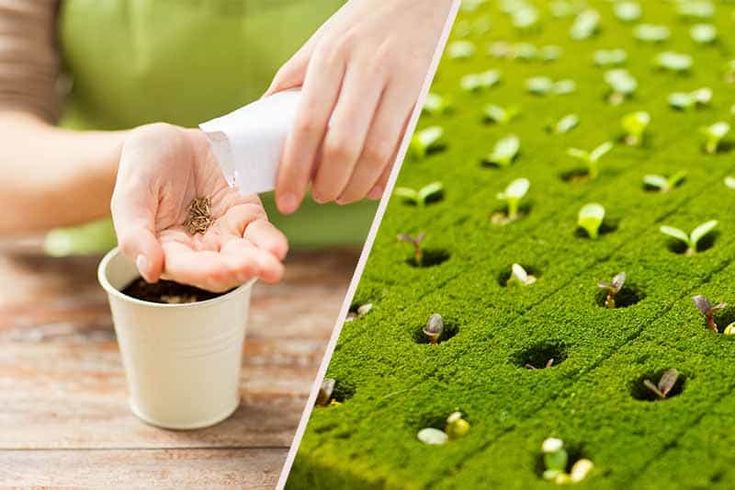
Additionally, selecting high-quality seeds from reputable sources is key to increasing the likelihood of successful germination and healthy plant development. Look for seeds that have been tested for germination rates and certified for quality. This information is often provided by seed suppliers and can help you make informed choices when purchasing seeds.
Remember, choosing the right seeds is the foundation for successful rockwool germination. By considering the unique requirements of your chosen plant species and investing in high-quality seeds, you can significantly increase the chances of achieving thriving hydroponic plants.
• Consider factors such as plant type, growth characteristics, and environmental requirements when choosing seeds for rockwool germination.
• Different plants have varying needs in terms of light, temperature, humidity, and nutrient levels.
• Research and select seeds that align with the specific conditions you can provide in your hydroponic system.
• Select high-quality seeds from reputable sources to increase the likelihood of successful germination and healthy plant development.
• Look for seeds that have been tested for germination rates and certified for quality.
Preparing the Rockwool Cubes for Seed Germination
Preparing the Rockwool cubes for seed germination is a crucial step in ensuring successful growth and development of your plants in hydroponics. Rockwool, also known as stone wool, is a popular growing medium due to its excellent water retention and aeration properties. Before planting your seeds, it is essential to properly prepare the Rockwool cubes to create an optimal environment for germination.
To begin, soak the Rockwool cubes in water with a pH level of 5.5 to 6.5 for at least one hour. This process helps to remove any impurities and adjust the pH level, ensuring a neutral and suitable environment for seed germination. Gently squeeze out any excess water from the cubes to maintain the ideal moisture levels.
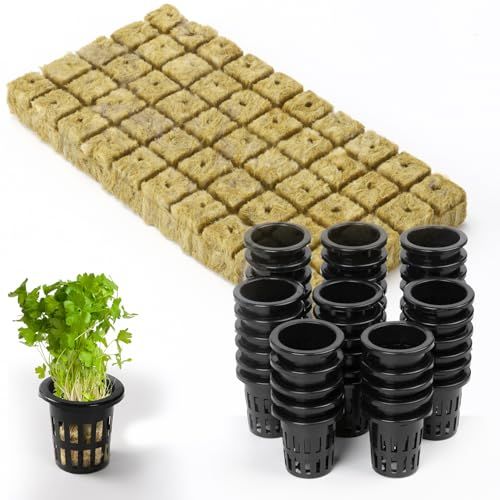
Next, create a small hole in each Rockwool cube using a toothpick or your fingertip. The hole should be wide enough to accommodate the size of the seed, ensuring proper contact with the growing medium. It is crucial to handle the Rockwool cubes with care to avoid damaging their structure.
By adequately preparing the Rockwool cubes before seed germination, you are setting the stage for healthy and vigorous plant growth. This vital step provides the foundation for successful hydroponic cultivation, creating an optimal environment for seeds to sprout and thrive.
• Soak the Rockwool cubes in water with a pH level of 5.5 to 6.5 for at least one hour.
• Gently squeeze out any excess water from the cubes to maintain ideal moisture levels.
• Create a small hole in each Rockwool cube using a toothpick or your fingertip.
• The hole should be wide enough to accommodate the size of the seed, ensuring proper contact with the growing medium.
• Handle the Rockwool cubes with care to avoid damaging their structure.
Soaking the Rockwool Cubes for Optimal Moisture Levels
Soaking the Rockwool cubes is an essential step in preparing them for optimal moisture levels for seed germination
. Rockwool, a popular growing medium in hydroponics, has excellent water retention properties, making it an ideal choice for germinating seeds.
To begin the soaking process, fill a clean container with water and place the Rockwool cubes inside. Ensure that the cubes are fully submerged in water. Allow them to soak for approximately 1-2 hours, or until they become completely saturated. During this time, the Rockwool will absorb moisture, expanding in size and becoming porous, providing the seeds with the necessary moisture for germination.
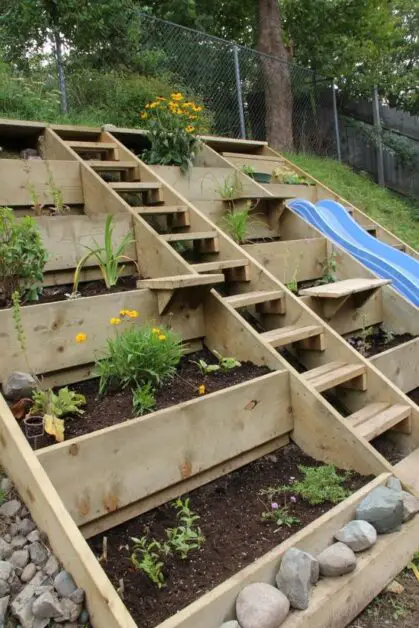
The soaking duration may vary depending on the size and density of the Rockwool cubes. It is crucial not to rush this step, as proper hydration is vital for successful seed germination. Remember, seeds require sufficient moisture to activate enzymes and initiate the germination process. By allowing the Rockwool cubes to soak adequately, you create the optimal growing environment for the seeds to sprout and develop into healthy seedlings.
• Soaking the Rockwool cubes is an essential step in preparing them for optimal moisture levels for seed germination.
• Rockwool has excellent water retention properties, making it ideal for germinating seeds.
• Fill a clean container with water and place the Rockwool cubes inside, ensuring they are fully submerged.
• Allow the cubes to soak for approximately 1-2 hours or until completely saturated.
• During this time, the Rockwool will absorb moisture, expanding in size and becoming porous.
• This provides the seeds with necessary moisture for successful germination.
• The soaking duration may vary depending on cube size and density; do not rush this step.
• Proper hydration is vital as seeds require sufficient moisture to activate enzymes and initiate germination.
• Adequate soaking creates an optimal growing environment for healthy seedling development.
Planting the Seeds in the Rockwool Cubes with Precision
When it comes to planting seeds in rockwool cubes for hydroponics, precision is key. By ensuring that each seed is correctly placed within the cube, you can greatly increase the chances of successful germination and ultimately, a thriving plant.
To plant the seeds in the rockwool cubes with precision, start by creating a small hole in the center of each cube. This can be done using a pencil, toothpick, or any other fine-pointed object. Carefully insert the seed into the hole, making sure it is positioned at the right depth. It’s important to follow the instructions provided for each specific type of seed, as different plants have varying germination requirements. Once the seed is in place, gently cover it with a small amount of extra rockwool or vermiculite to provide support and maintain moisture levels.
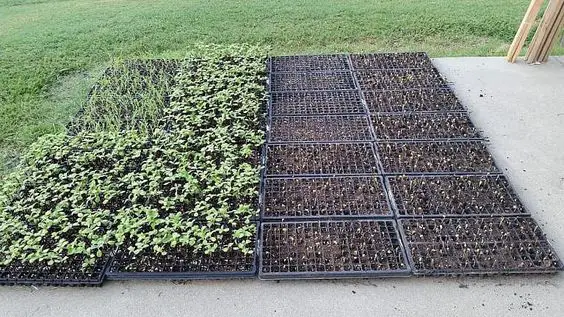
By taking the time to plant the seeds with precision, you are setting the stage for successful germination. Remember to handle the seeds and rockwool cubes with care to avoid damaging the delicate seedlings. Attention to detail in this stage will pay off in the long run, as healthy and robust plants begin with a strong start.
• Creating a small hole in the center of each rockwool cube is crucial for precise seed placement.
• Use a fine-pointed object like a pencil or toothpick to create the hole.
• Insert the seed into the hole, ensuring it is positioned at the correct depth according to the seed’s instructions.
• Cover the seed with a small amount of extra rockwool or vermiculite for support and moisture retention.
• Handle both seeds and rockwool cubes with care to avoid damaging delicate seedlings.
Providing the Ideal Environment for Seed Germination
Creating the ideal environment for seed germination is crucial for the success of your hydroponic system. By providing the right conditions, you can ensure that your seeds have the best chance of sprouting and developing into healthy plants.
One of the key factors to consider is temperature. Most seeds require a temperature range of 65 to 75 degrees Fahrenheit (18 to 24 degrees Celsius) for optimal germination. You can achieve this by placing your seeds in a warm location, such as a dedicated germination chamber or a heated mat. Maintaining a consistent temperature is essential, as fluctuations can hinder germination or lead to poor seedling growth.
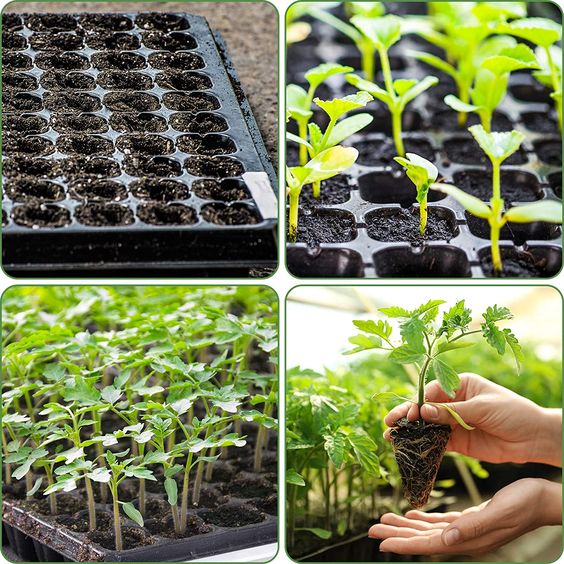
Another important aspect to consider is humidity. Seeds need adequate moisture to germinate, but excessive moisture can also cause rotting or fungal growth. Aim for a relative humidity level of around 70% during germination. This can be achieved by covering the seeds with a clear plastic dome or placing them in a humidity dome. Regularly monitor the humidity levels and adjust as necessary to ensure a favorable environment for seed germination.
• Temperature is a key factor in seed germination, with most seeds requiring a range of 65 to 75 degrees Fahrenheit (18 to 24 degrees Celsius) for optimal growth.
• Consider using a dedicated germination chamber or heated mat to provide the necessary warmth for your seeds.
• It is important to maintain a consistent temperature throughout the germination process, as fluctuations can hinder germination and lead to poor seedling growth.
• Humidity also plays a crucial role in seed germination. Aim for a relative humidity level of around 70% during this stage.
• Excessive moisture can cause rotting or fungal growth, so it’s important to find the right balance of moisture for your seeds.
• You can achieve the ideal humidity levels by covering the seeds with a clear plastic dome or placing them in a humidity dome.
• Regularly monitor and adjust the humidity levels as necessary to create an environment conducive to successful seed germination.
The Importance of Proper Lighting for Germinating Seeds in Rockwool
Proper lighting is essential for the successful germination of seeds in rockwool for hydroponics. Light serves as the primary source of energy for plants during the early stages of growth, playing a crucial role in triggering photosynthesis and promoting healthy development. Without adequate light, seeds may fail to sprout or produce weak and spindly seedlings.
When it comes to germinating seeds in rockwool, providing the right lighting conditions is crucial. Most seeds require exposure to light to initiate germination, while some prefer darkness. Understanding the lighting needs of different seeds is essential to ensure optimal growth. For instance, lettuce and spinach seeds are known to require some light for germination, whereas carrots and onions prefer darkness.
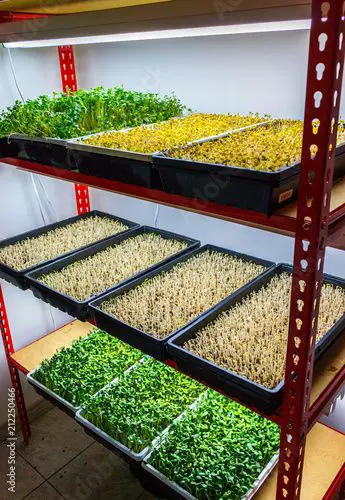
To provide the ideal lighting conditions, many gardeners opt for fluorescent or LED lights. These options emit the necessary spectrum of light for seed germination without generating excessive heat, ensuring that the seeds do not dry out or become damaged. Placing the light source approximately 2-4 inches above the rockwool cubes is typically recommended to guarantee sufficient illumination without causing stress to the emerging seedlings. It is also crucial to provide a consistent light source for 14-16 hours each day to simulate natural daylight conditions.
Proper lighting during the germination phase sets the foundation for strong and healthy plants in hydroponics systems. By providing the correct spectrum and intensity of light, gardening enthusiasts can ensure successful seed germination in rockwool, leading to robust and vibrant plants in their hydroponic gardens. Understanding the lighting requirements of different seeds and investing in the right equipment are key steps towards maximizing success in germinating seeds in rockwool for hydroponics.
• Light serves as the primary source of energy for plants during early growth stages
• Inadequate light can result in failure to sprout or weak seedlings
• Different seeds have varying lighting needs, some requiring exposure to light and others preferring darkness
• Fluorescent or LED lights are commonly used for germinating seeds in rockwool
• Placing the light source 2-4 inches above the rockwool cubes is recommended
• Consistent light source for 14-16 hours each day simulates natural daylight conditions
• Proper lighting during germination phase sets foundation for strong and healthy plants in hydroponics systems
• Understanding lighting requirements of different seeds is crucial
• Investing in appropriate equipment is important for successful seed germination
Maintaining the Right Temperature and Humidity Levels for Successful Germination
Maintaining the right temperature and humidity levels is crucial for the successful germination of seeds in rockwool. Proper temperature and humidity create an optimal environment for seedling development, ensuring healthy growth and robust root systems.
Temperature plays a key role in seed germination, as it directly affects the rate of metabolic processes within the seeds. Most seeds require a specific temperature range to initiate germination. Generally, a temperature between 70°F and 85°F (21°C and 29°C) is ideal for germinating seeds in rockwool. However, it’s important to consider the specific temperature preferences of the plant species you are cultivating. Some plants may have specific requirements for germination that deviate from the ideal range. It is recommended to refer to the seed package or consult reputable sources to determine the optimum temperature for each plant variety.
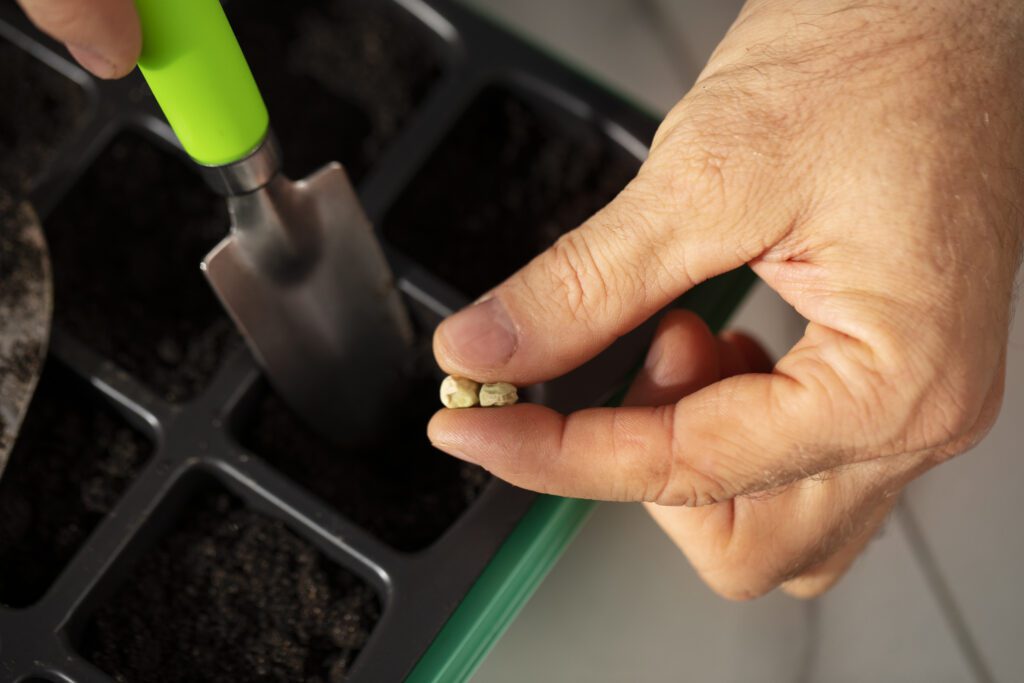
Humidity, on the other hand, affects the moisture level surrounding the seeds, which is vital for the successful germination process. A high humidity level helps to prevent the rockwool cubes from drying out, ensuring that the seeds remain hydrated. To maintain optimal humidity levels, cover the trays or containers containing the rockwool cubes with a humidity dome or a clear plastic sheet. This creates a microclimate that traps moisture and maintains a consistently moist environment for the seeds. However, it’s important to avoid excessive humidity, as it can lead to fungal growth and dampening off, a condition where seedlings rot at the base. Striking a balance in humidity is essential for the proper development of germinating seeds in rockwool.
• Maintain a temperature between 70°F and 85°F (21°C and 29°C) for ideal seed germination in rockwool.
• Refer to the seed package or reputable sources to determine specific temperature preferences for each plant variety.
• Use a humidity dome or clear plastic sheet to cover trays or containers with rockwool cubes to maintain optimal humidity levels.
• High humidity helps prevent drying out of rockwool cubes and keeps seeds hydrated during germination.
• Avoid excessive humidity, as it can lead to fungal growth and dampening off of seedlings.
• Striking a balance in humidity is crucial for successful development of germinating seeds in rockwool.
Monitoring and Adjusting pH Levels in the Rockwool for Seed Germination
Maintaining the proper pH levels in the rockwool during seed germination is crucial for the successful growth of plants in hydroponic systems. pH refers to the acidity or alkalinity of a solution and affects nutrient availability and plant uptake. In the case of rockwool, it is important to monitor and adjust the pH levels to create an optimal environment for seed germination.
Rockwool typically has a slightly acidic pH, ranging from 5.5 to 6.5. However, different plants may have specific pH requirements for optimal growth. It is essential to know the pH preferences of the plants you are cultivating and adjust the pH of the rockwool accordingly. This can be done by testing the pH using a reliable pH meter or pH testing kit.
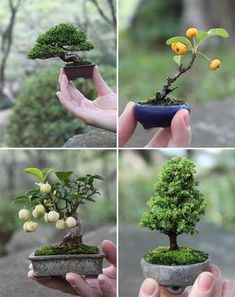
If the pH of the rockwool is too high or too low, it can lead to nutrient imbalances and hinder seed germination. To adjust the pH, you can use pH-up or pH-down solutions specifically designed for hydroponic systems. These solutions are typically composed of acids or bases that help raise or lower the pH levels, respectively. Gradually introduce the pH adjustment solution into the rockwool, making sure to mix it well and retest the pH until the desired range is reached.
Remember to keep a close eye on the pH levels as plants grow, as the pH needs of plants may change during different growth stages. Regular monitoring and adjustment of pH levels in the rockwool will ensure that your seeds have the best chance of germinating and growing into healthy, thriving plants in the hydroponic system.
• Maintaining proper pH levels in rockwool is crucial for successful plant growth in hydroponic systems.
• pH affects nutrient availability and plant uptake, so it’s important to monitor and adjust accordingly.
• Rockwool typically has a slightly acidic pH of 5.5 to 6.5, but different plants may have specific preferences.
• Test the pH using a reliable meter or testing kit to determine if adjustments are necessary.
• If the pH is too high or too low, nutrient imbalances can occur and hinder seed germination.
• Use pH-up or pH-down solutions designed for hydroponics to adjust the rockwool’s acidity/alkalinity.
• Gradually introduce these solutions into the rockwool, mixing well and retesting until desired range is reached.
• Monitor and adjust pH levels as plants grow since their needs may change during different growth stages.
Nutrient Solutions for Nourishing Germinating Seeds in Rockwool
Nutrient Solutions play a crucial role in nourishing germinating seeds in Rockwool, providing them with the essential elements they need to thrive and grow. These solutions are carefully formulated to meet the specific nutritional requirements of the seeds during their early stages of development. By supplying the right balance of macro and micronutrients, these solutions promote healthy root development, sturdy plant growth, and increased resistance to diseases and pests.
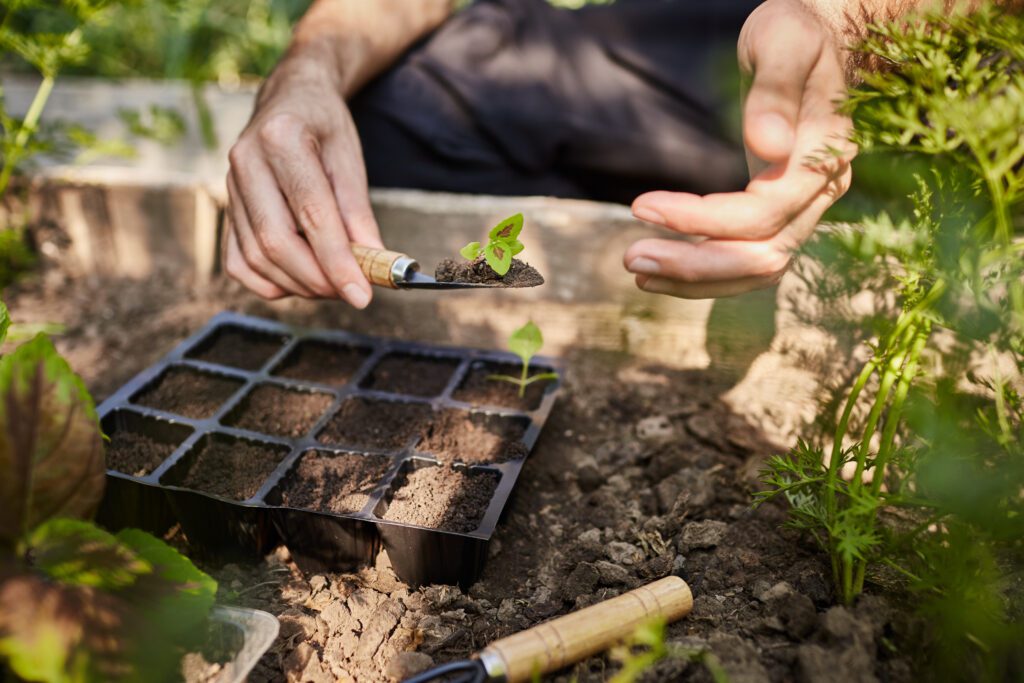
The composition of a nutrient solution for Rockwool germination will vary depending on the specific type of plant being grown. While certain nutrients like nitrogen, phosphorus, and potassium are needed by all plants, other elements such as calcium, magnesium, and trace minerals may be required in different quantities for optimal seed germination. It is important to follow the recommended dosage and ratio of nutrients as excess or deficiency can negatively impact plant growth. Regular monitoring of the nutrient solution’s pH levels is also essential as it affects the availability and uptake of nutrients by the seeds.
• Nutrient Solutions are essential for nourishing germinating seeds in Rockwool
• They provide the necessary elements for seed growth and development
• These solutions are formulated to meet specific nutritional requirements of seeds during early stages
• Balanced macro and micronutrients promote healthy root development and sturdy plant growth
• Nutrient solutions also increase resistance to diseases and pests
The composition of nutrient solutions for Rockwool germination varies based on the type of plant being grown.
• Nitrogen, phosphorus, and potassium are needed by all plants
• Calcium, magnesium, and trace minerals may be required in different quantities for optimal seed germination
Following recommended dosage and nutrient ratios is crucial as excess or deficiency can negatively impact plant growth.
Regular monitoring of pH levels in the nutrient solution is important as it affects nutrient availability and uptake by seeds.
Watering Techniques for Rockwool Seed Germination
Watering techniques are crucial for successful rockwool seed germination in a hydroponic system. The goal is to provide the right amount of moisture to the seeds without overwatering, which can lead to rot or damping-off disease. One effective method is bottom watering, where the rockwool cubes are placed in a shallow tray filled with water. This allows the cubes to absorb water from the bottom up, ensuring uniform moisture distribution throughout the medium. The duration of bottom watering depends on the specific needs of the seeds, but it is essential to monitor moisture levels closely and adjust accordingly.
Another popular watering technique is misting, which involves spraying a fine mist of water over the rockwool cubes and seeds. This method is especially suitable for smaller seeds that require minimal moisture to germinate. Misting should be done gently to avoid displacing the seeds or disturbing their delicate root systems. Additionally, it is important to maintain an appropriate humidity level within the growing environment to prevent the drying out of the rockwool cubes. Regular misting or the use of a humidity dome can help to achieve and maintain optimal moisture conditions for successful seed germination.
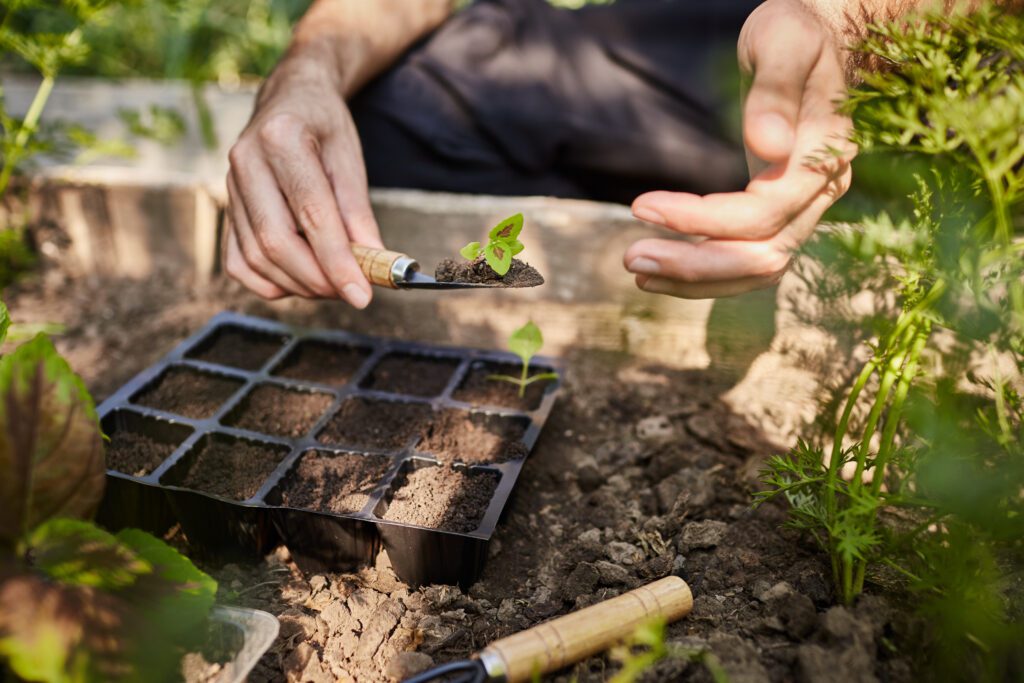
By practicing proper watering techniques, gardeners can create an ideal environment for seeds to sprout and thrive. Remember to strike a balance between providing adequate moisture and avoiding excess water, as this can have detrimental effects on seed germination. Experimenting with different watering methods and closely monitoring the moisture levels will help determine the most effective approach for your specific plant varieties. In the next section, we will discuss common issues that may arise during rockwool seed germination and how to address them.
• Bottom watering is an effective method for rockwool seed germination, as it allows for uniform moisture distribution throughout the medium.
• Monitor moisture levels closely during bottom watering and adjust accordingly to prevent overwatering or underwatering.
• Misting is another popular watering technique, especially suitable for smaller seeds that require minimal moisture to germinate.
• Be gentle when misting to avoid displacing seeds or disturbing their delicate root systems.
• Maintain an appropriate humidity level within the growing environment to prevent drying out of the rockwool cubes.
• Regular misting or using a humidity dome can help achieve and maintain optimal moisture conditions for successful seed germination.
Identifying and Addressing Common Issues in Rockwool Seed Germination
Common issues can arise during the process of rockwool seed germination in hydroponics systems. One common issue is improper moisture levels. If the rockwool cubes are either too dry or too wet, it can hinder seed germination. To address this issue, it is important to monitor the moisture levels regularly and adjust as needed. Keeping the rockwool cubes moist but not saturated is crucial for successful seed germination.
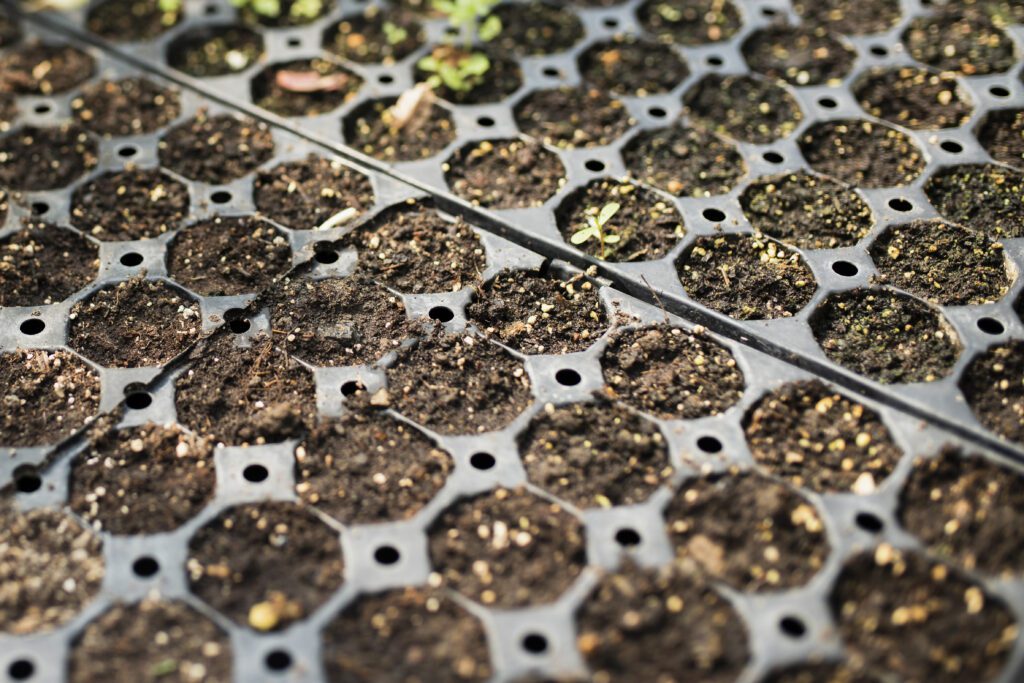
Another common issue is the presence of fungal diseases or pathogens that can infect the seeds and hinder their germination. This can be caused by unsanitary conditions or contaminated water. To address this issue, it is recommended to ensure proper hygiene practices, use clean and sterilized tools, and use filtered or sterilized water for watering the rockwool cubes. Additionally, the use of beneficial microbes or biofungicides can help prevent the growth of harmful pathogens and promote healthy seed germination. By addressing these common issues, gardeners can increase the success rate of seed germination in rockwool for hydroponics systems.
• Improper moisture levels: either too dry or too wet
• Monitor moisture levels regularly and adjust as needed
• Keep rockwool cubes moist but not saturated for successful germination
• Presence of fungal diseases or pathogens that can infect seeds
• Ensure proper hygiene practices and use clean tools
• Use filtered or sterilized water for watering rockwool cubes
• Consider using beneficial microbes or biofungicides to prevent harmful pathogens
By addressing these common issues, gardeners can increase the success rate of seed germination in rockwool for hydroponics systems.
Transferring Germinated Seeds from Rockwool to Hydroponic Systems
Once the seeds have successfully germinated in the rockwool cubes, the next step is to transfer them into the hydroponic system. This is a crucial stage in the growth process as it ensures that the seedlings receive the necessary nutrients and water to thrive.
Before transferring the germinated seeds, it is important to ensure that the hydroponic system is ready. This includes checking the pH levels, nutrient solution, and temperature. The pH levels should be adjusted to the optimal range suitable for the specific plant species being grown. The nutrient solution should be prepared according to the plant’s requirements, ensuring that all necessary elements are present in the right proportions. Additionally, the temperature should be maintained at an ideal range to promote healthy growth.
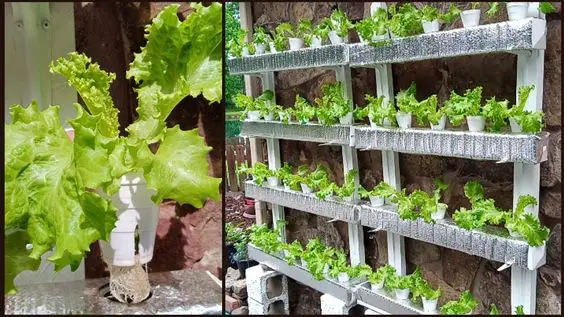
When transferring the seedlings, gently remove them from the rockwool cubes and insert them into the hydroponic system. Care should be taken to handle the delicate roots with caution, as any damage can hinder the plant’s growth. Place the seedlings in the hydroponic system and make sure they are securely positioned and supported. Lastly, ensure that the nutrient solution is flowing properly to provide the seedlings with a constant supply of essential nutrients.
By following these steps, the transfer of germinated seeds from rockwool to the hydroponic system can be done successfully, setting the stage for healthy and vigorous plant growth.
• Ensure that the hydroponic system is ready before transferring the germinated seeds
• Check and adjust pH levels to the optimal range for the specific plant species
• Prepare a nutrient solution with all necessary elements in the right proportions
• Maintain temperature at an ideal range for healthy growth
• Gently remove seedlings from rockwool cubes, being careful not to damage delicate roots
• Insert seedlings into the hydroponic system, ensuring they are securely positioned and supported
• Confirm proper flow of nutrient solution to provide constant supply of essential nutrients.
Troubleshooting Tips for Challenging Seeds in Rockwool Germination
When it comes to germinating challenging seeds in rockwool, there are a few troubleshooting tips that can help improve your success rate. Firstly, it is important to ensure that the rockwool cubes are properly soaked and have reached the optimal moisture levels before planting the seeds. This will provide a favorable environment for germination and encourage root development.
Secondly, one common issue with challenging seeds is slow or uneven germination. In such cases, it can be helpful to provide an extra boost of warmth for the seeds by using a heating mat or propagator. This can promote faster and more consistent germination.
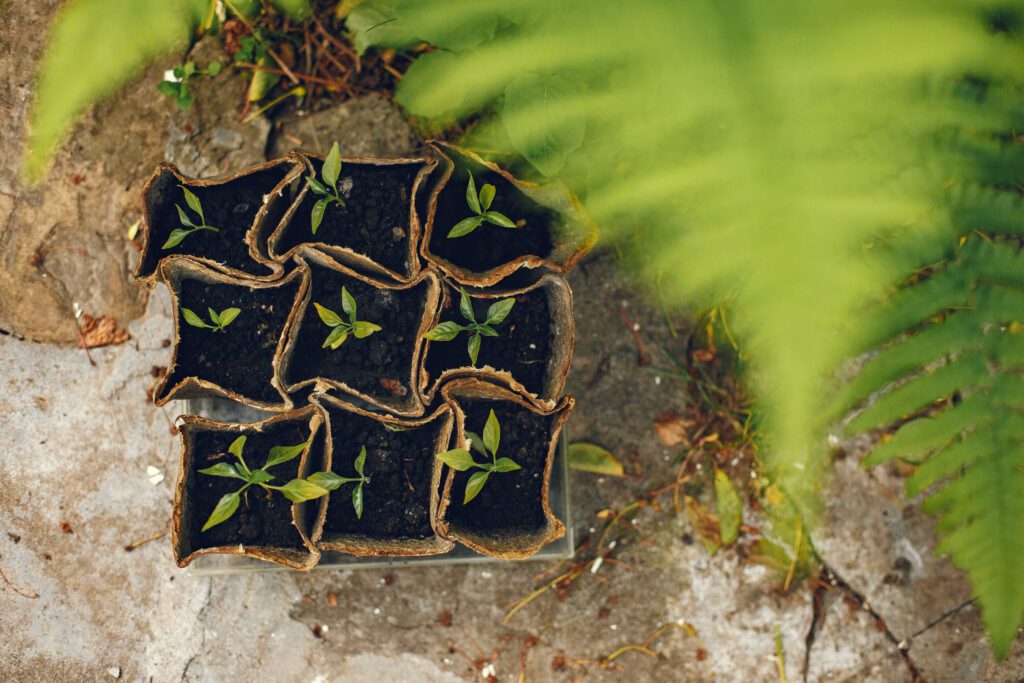
Additionally, some seeds may require scarification or stratification to break dormancy and stimulate germination. Scarification involves gently scratching the seed coat to allow moisture to penetrate and initiate the germination process. Stratification, on the other hand, involves exposing the seeds to periods of cold temperatures to simulate winter conditions. These techniques can be especially beneficial for challenging seeds in rockwool germination.
Furthermore, it is crucial to monitor and maintain the appropriate temperature and humidity levels during the germination process. High temperatures can cause the seeds to dry out, while excessively low temperatures can inhibit germination. Maintaining optimal levels will provide the seeds with the ideal conditions for successful germination.
By following these troubleshooting tips, you can enhance your chances of germinating challenging seeds in rockwool successfully. With patience and attention to detail, you can overcome any difficulties and achieve successful germination, setting the stage for healthy and thriving plants in your hydroponic system.
• Ensure that the rockwool cubes are properly soaked and have reached optimal moisture levels before planting seeds.
• Provide an extra boost of warmth for challenging seeds by using a heating mat or propagator.
• Consider scarification or stratification techniques to break dormancy and stimulate germination in certain seeds.
• Monitor and maintain appropriate temperature and humidity levels during the germination process.
• With patience and attention to detail, overcome difficulties for successful germination in rockwool.
Expert Tips for Maximizing Success in Rockwool Seed Germination
To maximize success in rockwool seed germination, there are a few expert tips that can make all the difference in the outcome of your hydroponic garden. First and foremost, it is crucial to select high-quality seeds that are suited for germination in rockwool. Look for seeds that have a high germination rate and are specifically recommended for hydroponic cultivation.
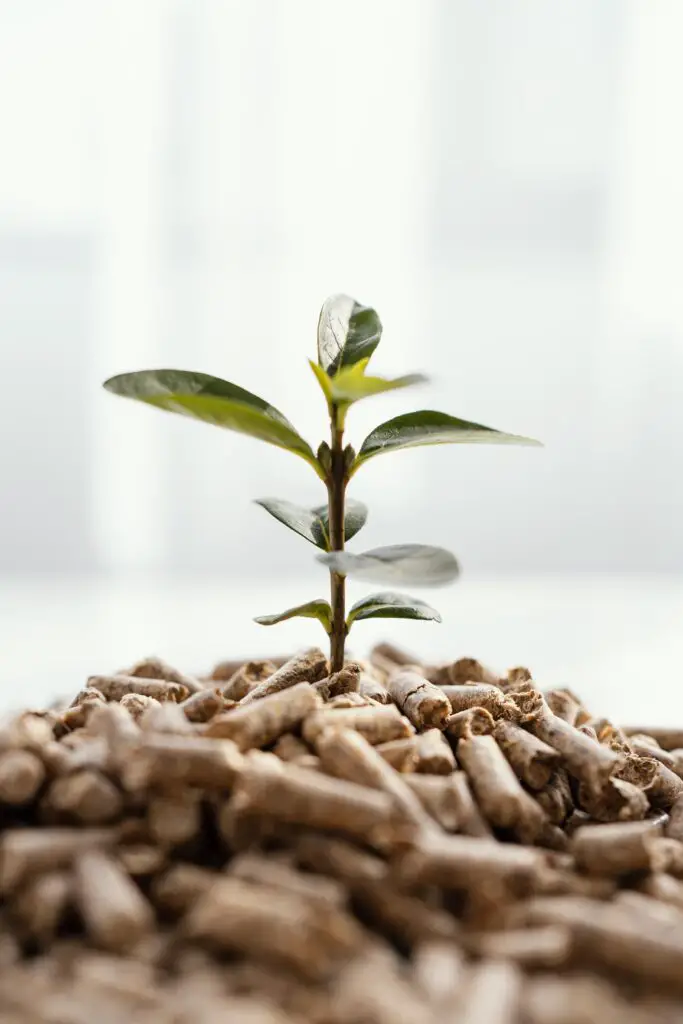
Once you have your seeds, proper preparation of the rockwool cubes is essential. Before planting the seeds, soak the rockwool cubes in water to ensure optimal moisture levels. This will aid in seed hydration and promote germination. Be mindful not to oversaturate the cubes, as excess moisture can lead to root rot and other complications. Additionally, take care when planting the seeds in the rockwool cubes, ensuring precise placement. Planting the seeds too deep or too shallow can affect the germination process and impede successful growth. By following these expert tips, you can set the stage for successful seed germination in rockwool and pave the way for a thriving hydroponic garden.
• Select high-quality seeds with a high germination rate and specifically recommended for hydroponic cultivation.
• Soak the rockwool cubes in water before planting to ensure optimal moisture levels.
• Avoid oversaturating the cubes to prevent root rot and other complications.
• Plant the seeds at the correct depth in the rockwool cubes for successful germination and growth.
Growing a Variety of Plants
Growing a variety of plants in a hydroponic system can be a rewarding and fulfilling experience for gardening enthusiasts. With the right techniques and knowledge, you can cultivate a diverse range of crops that thrive in a controlled environment. By utilizing rockwool as a growing medium, you can provide an ideal foundation for seed germination and plant growth.
One of the advantages of using rockwool for growing a variety of plants is its excellent water retention capabilities. Rockwool has the ability to hold onto moisture while still allowing for proper aeration, ensuring that your plants receive the necessary hydration they need to flourish. This is especially beneficial for plants that require consistent moisture levels, such as leafy greens or herbs.
In addition to its water retention properties, rockwool also provides excellent insulation for plant roots. This insulation helps to protect the delicate root system from extreme temperature fluctuations, allowing for optimal growth and development. With rockwool as your growing medium, you can create a stable and controlled environment that promotes healthy plant growth, regardless of the external conditions.
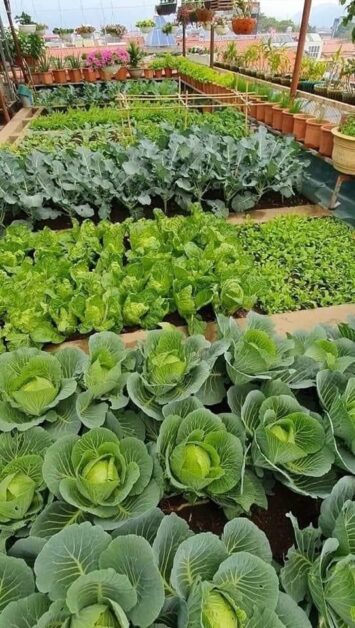
Overall, growing a variety of plants in rockwool offers numerous benefits, from its superior water retention to its insulating properties. By choosing this growing medium, you can have confidence in providing your plants with the optimal conditions they need for successful growth and abundant yields. Whether you’re a seasoned hydroponics enthusiast or a beginner gardener, rockwool can be an excellent choice for your diverse plant collection.
• Rockwool has excellent water retention capabilities, providing consistent hydration for plants
• The material allows for proper aeration, ensuring healthy plant growth
• It is especially beneficial for plants that require consistent moisture levels, such as leafy greens or herbs
• Rockwool provides insulation for plant roots, protecting them from extreme temperature fluctuations
• This insulation promotes optimal growth and development of plants
• Using rockwool as a growing medium creates a stable and controlled environment for plants to thrive in
• Regardless of external conditions, rockwool ensures healthy plant growth
• Growing a variety of plants in rockwool offers numerous benefits including superior water retention and insulation properties
What are the benefits of germinating seeds in Rockwool for hydroponics?
Germinating seeds in Rockwool for hydroponics offers several benefits, such as providing a stable and inert growing medium, excellent moisture retention, and easy transplanting into hydroponic systems.
How do I choose the right seeds for Rockwool germination?
When selecting seeds for Rockwool germination, consider factors like plant type, growth requirements, and desired yield. Choose seeds that are suitable for hydroponic cultivation and have a high germination rate.
How do I prepare Rockwool cubes for seed germination?
To prepare Rockwool cubes for seed germination, soak them in water with a pH of 5.5-6.5 for a few hours. Squeeze out excess water gently, ensuring the cubes are evenly moist but not dripping.
What is the ideal environment for seed germination in Rockwool?
The ideal environment for seed germination in Rockwool includes a temperature of 70-75°F (21-24°C), humidity levels around 70%, and adequate airflow. Providing these conditions promotes successful germination.
How important is proper lighting for germinating seeds in Rockwool?
Proper lighting is crucial for germinating seeds in Rockwool. Use full-spectrum grow lights placed 2-4 inches above the seedlings for 16-18 hours a day. This ensures sufficient light for photosynthesis and healthy growth.
How do I maintain the right temperature and humidity levels for successful germination?
Maintain the right temperature and humidity levels for successful germination by using a grow tent or a heat mat to regulate temperature, and a humidifier or misting system to control humidity. Regularly monitor and adjust as needed.
How do I monitor and adjust pH levels in the Rockwool for seed germination?
Monitor the pH levels in the Rockwool by using a pH meter or test strips. Adjust pH using a pH up or down solution to maintain a range of 5.5-6.5, ensuring optimal conditions for seed germination.
What nutrient solutions should I use to nourish germinating seeds in Rockwool?
Use a balanced hydroponic nutrient solution specifically designed for seedlings. Follow the manufacturer’s instructions and dilute the solution accordingly to provide essential nutrients for healthy seedling growth.
How should I water the Rockwool cubes during seed germination?
Water the Rockwool cubes by gently pouring or misting water onto them. Maintain moisture levels by regularly checking the cubes’ weight and ensuring they remain evenly moist, avoiding overwatering.
What are the common issues in Rockwool seed germination and how can I address them?
Common issues in Rockwool seed germination include fungal diseases, damping off, and nutrient imbalances. Address these issues by ensuring proper ventilation, using sterile tools and solutions, and adjusting nutrient levels as necessary.
How do I transfer germinated seeds from Rockwool to hydroponic systems?
To transfer germinated seeds from Rockwool to hydroponic systems, gently remove the seedlings from the cubes and place them into net pots or growing media, ensuring the roots are properly covered. Handle the seedlings with care to avoid damaging the delicate root systems.
What are some troubleshooting tips for challenging seeds in Rockwool germination?
If you encounter challenges with certain seeds during Rockwool germination, try scarifying or pre-soaking the seeds, adjusting temperature and humidity levels, providing additional light, and experimenting with different nutrient solutions to improve germination rates.
What are some expert tips for maximizing success in Rockwool seed germination?
Some expert tips for maximizing success in Rockwool seed germination include using a seedling heat mat for consistent warmth, maintaining clean and sterile conditions, ensuring proper airflow, and keeping a detailed record of your germination process for future reference.

Kanike Sreekanth, a prolific writer at SouthElMonteHydroponics, brings a unique blend of creativity and scientific rigor to the table. With a degree in Horticulture from a prestigious institution, Kanike’s expertise spans hydroponic farming, plant biology, and agricultural sustainability. Their passion for exploring innovative cultivation methods and promoting environmental stewardship drives them to uncover new insights in the realm of hydroponics. Kanike’s writing serves as a conduit for sharing their knowledge and inspiring others to embrace alternative farming practices for a more sustainable future.


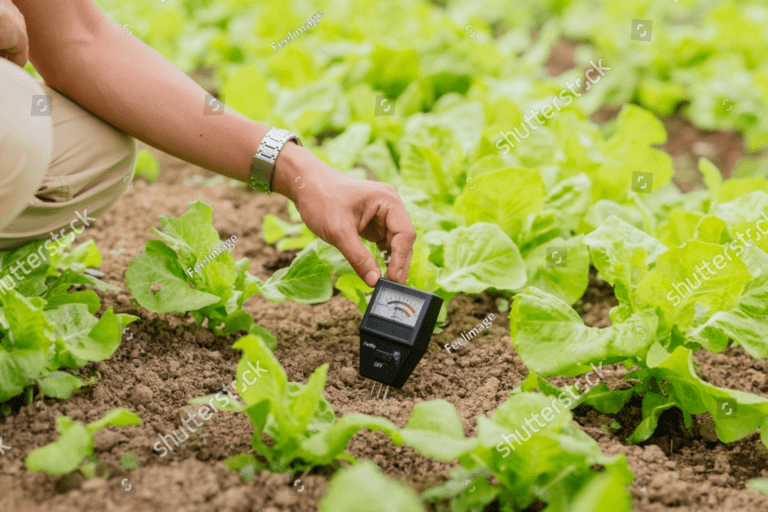
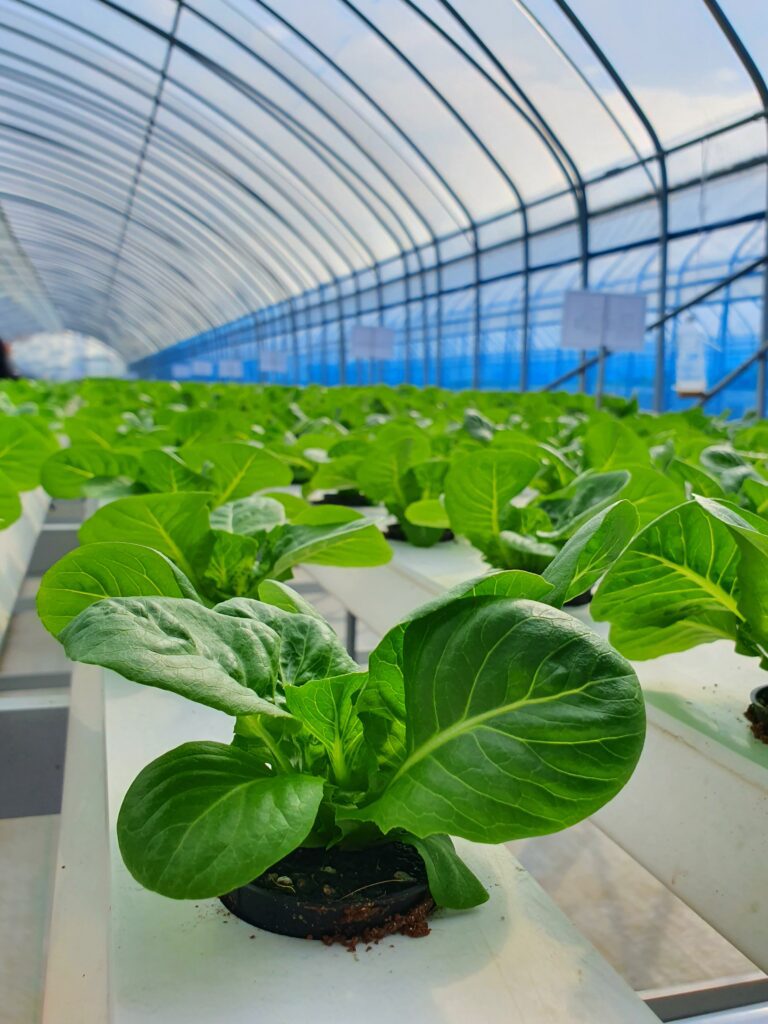
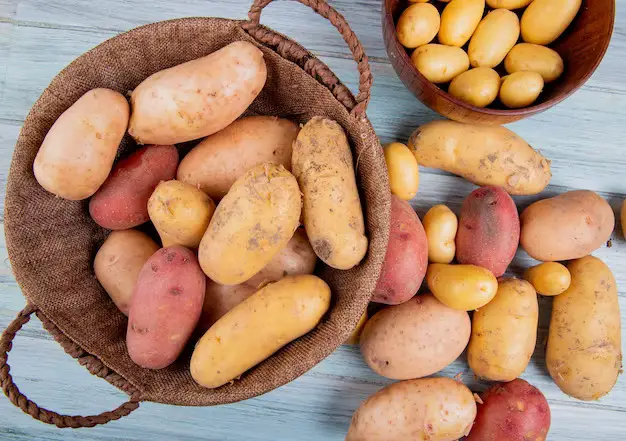
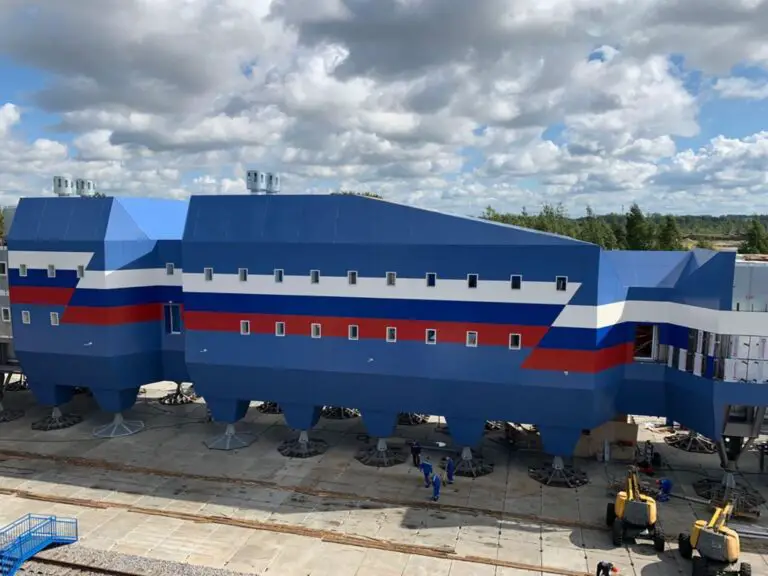
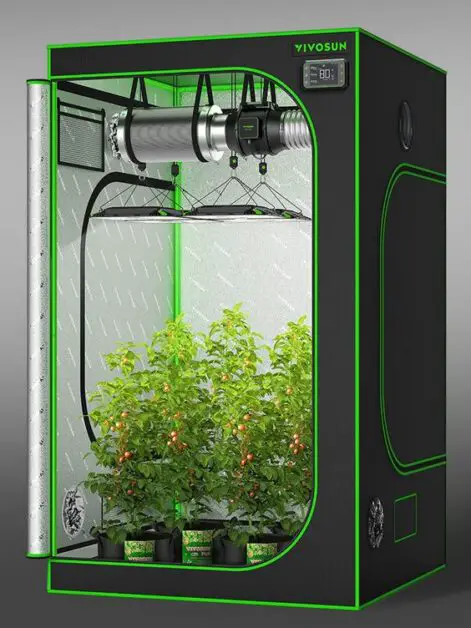
Hello, you used to write great, but the last few posts have been kinda boring?K I miss your great writings. Past few posts are just a little bit out of track! come on!